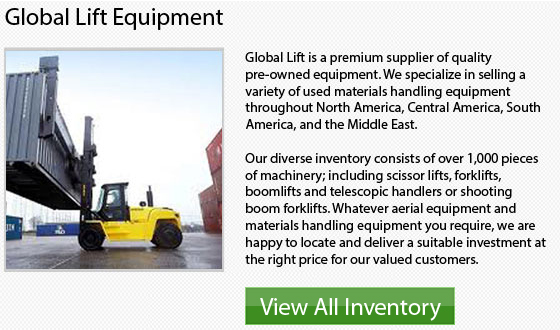
In order to prevent forklift misuse wherever possible, counterbalance forklift drivers are encouraged to take the following measures to keep the machine functioning in a safely manner and to ensure that the driver remains safe.
Tires: Whenever tires are worn badly or missing chunks, they should be replaced. Tires that are in poor shape can cause jarring impacts to the driver, the axle parts, to the wheel components and to the load itself. Demanding operations involve utilizing correct tires for maximum functioning of the lift truck. So as to be certain that your equipment has the correct tires, ask your local dealer for an application survey.
Forks: In addition, operating a lift truck with poorly worn tires could also cause premature wear on the bottom of the forks. This can greatly jeopardize the ability of the forklift's truck to lift, which creates a potentially dangerous work environment. Being sure to carry out frequent fork checks by operators and by in-house maintenance technicians has to happen regularly so as to make sure that your machine is functioning at maximum capacity.
Transmission: Damage to the transmission system is an issue which is caused by operators who ride the inching pedal. In order to prevent major component breakdown and failure, the inching pedal should ideally just be engaged when you want to apply the brakes while revving the engine and when you are approaching a rack. When the engine is revving, the hydraulics could work at full speed. When the hydraulics are not being utilized, the brake pedal is used for regular stopping of the truck.
Impact: Forklifts would ultimately encounter many impacts with their environment and surroundings when operating at high speeds. Possible impacts could include the forks, wheels, backrests, tires and attachments. Following which operators drive what units by assigning machinery to an operator can help track who is responsible for the misuse to the machinery. By installing an impact monitor, a vehicle speed limiter or a keyless access system as options on your lift truck can help you to greatly lessen impact damage.
Training: Ongoing training and regular training is important to make certain that your equipment is correctly maintained. Users of the equipment need to be on board with proper maintenance and safety applications. It is required that all new operators are trained properly and know how to carry out the necessary inspections on a daily basis so they could correctly operate the machinery prior to utilizing it.